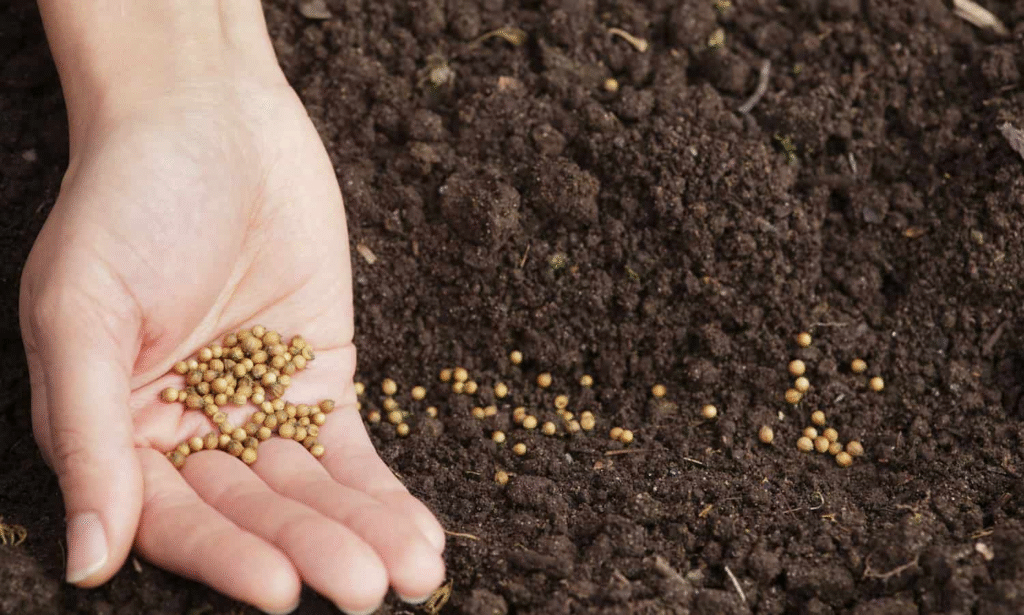How Can Farmers Ensure Purity and Consistency in Seeds?

For farmers, seed purity and consistency form the foundation of healthy, high-yielding crops. The quality of seeds directly influences productivity, disease resistance, and overall sustainability in agriculture. However, challenges such as cross-pollination, contamination during storage, and genetic variations often compromise seed reliability. This is where solutions like custom seed processing play a vital role, helping farmers maintain uniformity, remove impurities, and ensure that only the best-quality seeds reach the field.
Why Seed Purity and Consistency Matter

Impact on Crop Yield and Productivity
The productivity of any farm largely depends on the seeds sown. Pure seeds ensure that crops grow uniformly, allowing farmers to manage fields more efficiently. When plants mature at the same rate, harvesting becomes easier and losses are minimized. In contrast, mixed or impure seeds can result in irregular growth, smaller harvests, and higher input costs for fertilizers, water, and pesticides. In short, seed purity directly translates into better crop performance and consistent returns.
Importance for Disease Resistance and Adaptability
Healthy, pure seeds are more resilient to pests, diseases, and environmental stress. For example, certified seeds often undergo rigorous testing to ensure they carry resistance to common crop diseases. Consistency also supports adaptability — when all seeds in a batch share the same genetic traits, they respond to weather conditions in a predictable way. This helps farmers manage risk and maintain stability even when climate conditions shift.
Role in Market Value and Farmer Profitability
Beyond the field, seed quality significantly affects a farmer’s financial success. Buyers and food processors prefer crops that are uniform in size, color, and texture — all of which depend on consistent seeds. Pure seeds also reduce rejection rates in commercial markets, improving a farmer’s reputation and profitability. By investing in reliable seed sources and technologies like custom seed processing, farmers not only improve crop quality but also strengthen their market position, paving the way for long-term profitability.
Common Challenges in Maintaining Seed Purity

Cross-Pollination Issues
One of the biggest threats to seed purity is unwanted cross-pollination. Many crops, especially those pollinated by wind or insects, can easily exchange pollen with nearby fields. This results in genetic mixing, which alters the traits of the next generation of seeds. For example, hybrid vigor may be lost, or specific disease-resistant traits may weaken. Without proper isolation techniques, even a small amount of cross-pollination can compromise seed uniformity across an entire harvest.
Contamination During Harvesting, Storage, or Processing
Seed purity is not only challenged in the field — it can also be lost after harvest. During threshing, cleaning, or storage, seeds from different varieties may accidentally mix. Equipment that isn’t thoroughly cleaned between uses is a major source of contamination. Likewise, poor storage practices can lead to moisture, pests, or fungal growth that damages seed quality. This is why modern solutions such as custom seed processing are becoming essential, as they help remove foreign material and ensure that seeds remain true to type.
Use of Uncertified or Mixed Seeds
Many farmers unknowingly reduce seed quality by using uncertified or mixed seed batches. These seeds may contain impurities, lower germination rates, or traits unsuitable for local conditions. Unlike certified seeds, uncertified varieties often lack testing for purity, viability, or disease resistance. Relying on such seeds not only reduces yield but also poses long-term risks for farm sustainability. By choosing certified suppliers and investing in seed quality verification, farmers can avoid these costly mistakes.
Best Practices for Ensuring Seed Purity

Use Certified Seed Sources
Importance of Purchasing from Verified Suppliers
The first step toward maintaining seed purity is starting with high-quality, certified seeds. Certified seeds are sourced from reliable suppliers who follow strict standards to ensure genetic identity, germination ability, and freedom from contaminants. This minimizes the risk of introducing impurities into the field.
Benefits of Certified Seeds Over Uncertified Ones
While uncertified seeds may appear cheaper, they often carry hidden costs such as lower yields, increased vulnerability to pests, and inconsistent performance. Certified seeds, on the other hand, provide peace of mind, delivering uniform crops and reducing the need for additional interventions during the growing season. For farmers looking to scale operations, certified seeds are a wise investment that pays off in the long run.
Implement Proper Isolation Techniques
Field Isolation Methods to Prevent Cross-Pollination
Cross-pollination is one of the biggest threats to seed purity. To counter this, farmers should isolate seed production fields by maintaining physical distance between different varieties. Natural barriers such as trees, buffer zones, or even staggered planting schedules can help minimize pollen drift from nearby fields.
Seasonal Planning to Avoid Contamination
Another effective strategy is adjusting planting times so that different varieties do not flower at the same time. By staggering crop cycles, farmers reduce the likelihood of unwanted pollen transfer, ensuring that the seed crop remains true to its variety.
Maintain Strict Field and Storage Hygiene
Cleaning Tools, Equipment, and Storage Units
Contamination can happen easily if tools and equipment are shared between different fields or seed batches. Cleaning harvesters, threshers, storage bins, and seed-processing equipment is critical to prevent mixing. Even small residues of another seed type can compromise purity levels.
Avoiding Mixing of Different Seed Batches
Farmers must store each seed batch separately in properly labeled containers. This not only maintains purity but also helps in tracking seed origin and quality. Using airtight containers and maintaining optimal temperature and humidity levels also protects seeds from pests and fungal infections.
Adopt Seed Processing and Testing Methods
Techniques for Cleaning and Grading
Modern seed processing involves cleaning, grading, and sorting to eliminate broken, immature, or contaminated seeds. Techniques like air-screen cleaners, gravity separators, and optical sorters ensure that only the best-quality seeds are preserved for planting. Farmers who invest in custom seed processing gain an added advantage by tailoring processes to specific crop needs.
Seed Lab Testing for Germination and Purity Checks
Testing seeds in certified labs provides critical data on germination rates, vigor, and purity levels. Regular testing ensures that only viable seeds are used for the next crop cycle. This proactive approach reduces risk and guarantees consistent field performance year after year.
Role of Technology in Improving Seed Consistency

Use of Modern Seed Processing Machines
Traditional seed cleaning and sorting methods often leave impurities behind, which compromise seed performance. Modern seed processing machines, however, use advanced techniques like air-screen separation, gravity grading, and optical sorting to eliminate damaged, diseased, or foreign seeds. These machines ensure that only healthy, uniform seeds are selected for planting. Moreover, custom seed processing equipment allows farmers to fine-tune processes according to the specific requirements of different crops, improving both purity and consistency.
Genetic Testing and Biotechnology Advancements
Biotechnology plays a major role in improving seed quality at the genetic level. Techniques such as DNA fingerprinting and genetic marker analysis allow scientists to verify seed identity and detect impurities early. Through genetic engineering, disease-resistant and climate-adapted varieties can be developed, ensuring long-term stability for farmers. Genetic testing also provides transparency, ensuring that the seeds farmers plant are exactly what they paid for, free from genetic contamination.
Digital Tools for Tracking Seed Batches
In addition to machinery and biotechnology, digital tools have made seed quality management more precise. Technologies like QR codes, blockchain tracking, and farm management software allow farmers and suppliers to monitor seed batches from production to planting. This ensures complete traceability, helping farmers identify and eliminate sources of contamination. Digital tracking also improves trust in the marketplace, as buyers and regulators can easily verify the authenticity and quality of seed lots.
Conclusion
Seed purity and consistency are the cornerstones of successful farming. From ensuring higher yields and disease resistance to improving market trust and sustainability, the quality of seeds directly shapes a farmer’s harvest and profitability. While challenges such as cross-pollination, contamination, and uncertified seeds exist, they can be effectively managed through certified sources, proper isolation techniques, strict hygiene, and modern technologies like custom seed processing and genetic testing. Farmers who embrace these practices not only safeguard their fields today but also strengthen their position in the marketplace for the future. Reliable seeds bring reliable harvests, and reliable harvests bring long-term growth.
FAQs
1. What does seed purity mean in farming?
Seed purity refers to the percentage of a seed lot that is made up of the intended crop variety, free from contamination by other seeds, weeds, or foreign material. High purity ensures consistent crop growth and reliable yields.
2. How can farmers prevent cross-pollination in seed production?
Farmers can prevent cross-pollination by using field isolation methods, planting buffer zones, and staggering crop flowering times. These steps reduce pollen transfer between different crop varieties.
3. Why should farmers choose certified seeds?
Certified seeds are tested for purity, germination rate, and disease resistance. They offer uniformity, better yield potential, and reduce the risks associated with uncertified or mixed seeds.
4. What role does seed processing play in quality improvement?
Seed processing helps clean, grade, and sort seeds, removing impurities and ensuring uniform size and quality. Advanced custom seed processing technologies give farmers greater control over consistency and performance.
5. How does seed purity affect market value?
Pure and consistent seeds produce uniform crops, which are highly valued in markets. Buyers and processors prefer consistent harvests, leading to better pricing, stronger trust, and long-term profitability for farmers.



